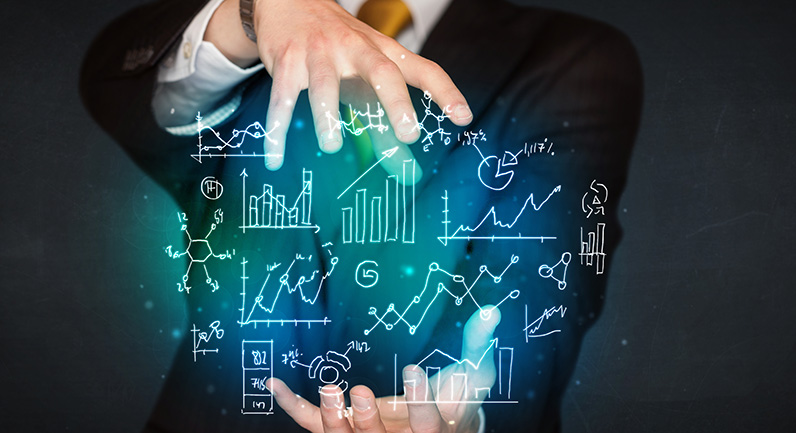Long providing oversight of federal programs, the Government Accountability Office (GAO) has been increasing its oversight of science & technology programs
For almost a century, the Government Accountability Office (GAO) has been providing Congress and the American people with independent oversight of the federal government’s programs and operations, from space exploration, healthcare, infrastructure, and the environment, to defense, energy, cybersecurity, and more.
But a lesser-known function of the GAO has been gaining increased importance of late —namely, its oversight of all federal science and technology programs, as well as its investigations into the possibilities, pitfalls, and ethics of incorporating the latest scientific advancements into the fabric of American society.
A New Team for Science, Technology Assessment and Analytics
The GAO’s science and technology oversight includes such federal agencies as the National Aeronautics and Space Association (NASA), National Science Foundation, and the National Institute of Standards and Technology. But sci-tech innovation has become so integral to both the federal government and society that, in January, the GAO created a new department —the Science, Technology Assessment and Analytics team (STAA) — to consolidate its technical personnel and better address the growing challenges of a society increasingly dependent on technology. The team has 70 employees now, mostly scientists, researchers, engineers, and programmers; and it plans to double its staff to 140 next year.
“The best way to think about STAA is under a broad umbrella of oversight, insight, and foresight for all things science and technology,” explains Tim Persons, the GAO’s chief scientist and managing director of the STAA team. “We provide non-partisan information to Congress on a wide range of highly technical issues in order to help Congress perform its duties.”
The GAO is the federal government’s largest “watchdog” agency. In general, it is responsible for ensuring the integrity and efficiency of federal programs, and for protecting the government against fraud, waste, and abuse. But the agency’s sci-tech role has expanded to include a great deal of research into the likely impacts, opportunities, and risks—to society, the environment, and economy—associated with new scientific developments and technologies.
Last year, for example, the GAO’s tech teams provided 34 Congressional committees with almost 200 reports, one of which was a landmark report on the impact of artificial intelligence on cybersecurity, automated vehicles, criminal justice, and financial services. The second part of that report, due later this year, will cover the imminent marriage of AI and healthcare. Another major project the STAA team is currently working on is a four-part investigation into the impact of 5G broadband across all sectors of society, including the business implications of 5G in terms of innovation, disruption, and global competitiveness. According to Persons, the GAO will also report on the “social, ethical, legal, civil, and privacy issues” associated with increasingly pervasive and interconnected smart technologies amplified and empowered by 5G.
Also New: The Innovation Lab
Another key addition to the STAA team is its new Innovation Lab, which was established to research and develop improved auditing practices using advanced analytics, artificial intelligence, and emerging technologies such as quantum computing.
“The Innovation Lab is where we’ll be prototyping technologies such as blockchain for things like better supply-chain security and applying machine learning and advanced analytics to tame Big Data and improve the agency’s auditing capabilities,” says Persons.
The Innovation Lab will also be working with other teams within the GAO — such as its Forensic Audits and Investigative Services (FAIS) team — to develop new auditing practices for identifying fraud, waste, and abuse.
“We are looking forward to working with the STAA team to develop ways we can use advanced analytics to take our auditing practices to the next level,” says Johana Ayers, head of the FAIS team. “The Innovation Lab can help us develop and test new techniques and technologies before using them in active investigations.”
Better data-matching capabilities combined with predictive analytics could, for example, help the agency distinguish between “improper payments” and outright fraud in benefits distribution — or, better yet, identify situations where the potential for fraud exists, and take pre-emptive measures to prevent it.
The GAO’s Mission: To Tell the Truth
Most citizens are probably unaware of it, but the GAO is one of the few government agencies responsible for warning Congress and the American people about the possible downsides of new technology. And these days, as technology encroaches into virtually every corner of American life, and as society grapples with the unintended consequences of yielding so much power to tech companies like Amazon, Facebook, and Google, it behooves us all to listen when an agency like the GAO raises a flag of caution.
In its Strategic Plan, the GAO has identified five emerging technologies with the potential to “transform society”: genome editing; artificial intelligence; quantum information science; brain/augmented reality; and cryptocurrencies/blockchain. Because of their transformative power, the GAO has determined that these technologies require more study to consider their wide-ranging implications, both pro and con.
The GAO’s primary job is to tell Congress and the American people the truth about how the government is — or isn’t — operating, even if it hurts. So, when the GAO’s reports on these and other new technologies become available, both Congress and the American people should pay attention. The truth may be in there, and we’d be wise to consider it.
All GAO reports are available online.








